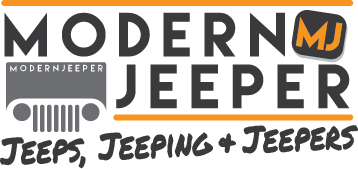

More Tips on the Art and Process of Facilitation (Part 2)
Land Use Updates January 21, 2020 Del Albright

Special 2-Part series about the art and science of facilitation and how it can help retain volunteers and produce better meetings while resolving conflicts. It covers how we pretty much dislike sitting in meetings but how specialized facilitation can save the day. Facilitation can also resolve the conflict that is killing our access! We must not fight amongst our organizational selves but rather be a united, team voice in the fights for freedom and access. Here is a formula for doing just that…
The Editors
How to facilitate a Meeting Part 2
Facilitator Tools and Tricks
Process
As we continue from Part 1, you now know that learning to be a facilitator is a full-blown course of study and that the key to successful facilitation is to step outside the content and just focus on the process. In part 2 we will simplify the steps in the process so that you can use facilitation techniques for any meeting (or conflict resolution). The process is the same. Here are the keys:
- Outcomes: We talked about that in Part 1. Make sure the first thing to do is to have clearly defined outcomes for the meeting.
- Logistics: Set up the meeting place and room to meet the mission (outcomes). I like to use semi-circles of chairs, or open horseshoe table formations so everyone can see the facilitator and the flip chart. All the participants can see each other also. This helps to make the communication more face to face.
It also allows the facilitator to use body language/movement to control the meeting. You can literally get in between two participants in a heated exchange. You can also place your body close to folks carrying on a side conversation disrupting the meeting. Your body language, in this case, helps to remind them to get back in the meeting and draws attention to their side talk. (See figure below for an example room set up). Know where the bathrooms and drinking fountains are so you can tell your group at the start-up where these things are located. Have your masking tape handy so you can tape the flip charts to the walls as you go along.
- Agenda: Always have a clear agenda with time frames. Put this on a flip chart before the meeting starts and have it in front of the participants as they walk into the room. Email it out ahead of time if practical. Review the Agenda as one of the first things you do in your meeting.
- Introductions and warm-up: Sometimes people are slow to start up in meetings. You should be prepared to go slow at the start and faster toward the end. Let folks warm up. Have time in the agenda for them to do introductions and general discussions to break the ice and get them started.
You may want to allow a few “position statements” to surface upfront to get them out in the open. It also helps get whatever is bothering someone off their chest early on so they’re not preoccupied with it the whole meeting. Always have participants identify (introduce) themselves in a meeting unless it’s just a group that always deals with each other.
- Stay in charge of the meeting: Never lose control of your meeting. Follow the agenda and ground rules (see below). Sometimes I apologize up front in a meeting to let folks know, that as their facilitator, I may be aggressive in cutting someone off who gets off topic (agenda). But this is out of respect for the rest of the group and the agreed-upon agenda. There is nothing personal involved. It’s just business. J
6. Close on time: Close your meeting at the agreed time. Before you do, the last thing you do is review the action items and any next steps (or future meeting dates/times).

This is my favorite way to set up for a meeting of 10 to 25 folks – the open horseshoe or U-shaped meeting.
Ground Rules
Ground rules are part of running good meetings with TARAC. They set the stage for you to be the good guy while being the bad guy. They keep folks on the agenda and on track with the subject. They also provide for comfort needs. Put them on a flip chart and post them where folks can see them easily (e.g. front of the room). Typical Ground Rules look like this:
- Only one person speaks at a time
- Stay on the agenda and focus on issues; not personalities. No personal attacks. No chasing rabbits.
- We’ll take breaks every hour and we’ll come back on time!
- No side conversations.
- The facilitator decides who speaks next – raise your hand to speak.
For getting verbalizations (group agreement) sometimes I resort to the physical motion of thumbs up or thumbs down (or thumbs sideways). I ask the group to ALL give me a “temperature check.” By that, they know I mean for them to give me a hand signal (thumbs up, down or sideways) as to how they’re doing with the agenda item we’re on or their seat-in-the-seat factor.
You can adjust based on what you see. It works. It also gets the group physically more involved in the item.

Ensure all participants can see the flip charts and hear the speakers.
Meeting Traffic Cop
As a facilitator, your job is to be the meeting traffic cop. You give directions. You stop traffic (unwanted conversations or off-agenda discussions). You enforce the laws (Ground Rules). And you sweat out in the sun while everyone else drives by with their a/c on. J
This is a visual you can keep in your mind as you step up to facilitate. Be the traffic cop. Stand in the busy intersection and put on your white gloves (metaphorically).
You don’t drive someone else’s car. You don’t tell drivers where they’re going. You merely guide them through the busy intersection; you direct them; you keep them in line; you assist the flow of traffic to keep moving smoothly.
You do this in meetings. You are giving the directional help to get the group to focus on their outcomes and agenda. You are a conduit of information. It flows into and out of you. You don’t answer questions; you redirect the question back to the group to answer.
Some facilitators call this the boomerang technique. When someone looks at you (because you’re standing upfront with the flip chart pen in your hand), and asks a direct question, you merely throw (boomerang) the question back to the group.
Remember, you’re not the answer person; you’re merely the conduit of information helping the group find the answer. You redirect the question and find the person with the answer.
Focus on the Issues
One of your biggest jobs is to keep people focused on the issues – the subject – or the agenda topic. You need to work hard to keep your group from launching into someone’s personality or beliefs. As a facilitator, you need to stay disconnected enough from the topics that you can direct the discussion away from a personal attack back to the issue itself. It takes practice.
Outcomes, Methods, and Resources (OMR)
OMR is one of my favorite facilitator tools.
Outcomes are what we’re after. Methods are how we get there. And Resources are what we have to help us get through the methods to the outcomes.
When things get bogged down in a meeting, and you see the group is trying to get somewhere, but that somewhere has yet to be defined, you can use OMR to help them see where they’re going and how to get there. Stop the discussion, and put things in terms of outcomes, methods, and resources. It makes the hardest of issues a lot easier to handle.
Diagrams and Matrixes
Another trick is to use pictures such as diagrams and matrixes. I usually draw these on the flip chart (or blackboard) to help folks focus on finding an answer in the shortest period of time. This is a very helpful technique when a decision needs to be made by the group. A matrix with left and top columns in flip chart or computer projected screen helps participants see options quickly. In other words, use visual aids often!

Summary
If you use facilitation you will find yourself keeping a lot more volunteers engaged, accomplishing more in a shorter period of time, and having a better time getting things done!
##







![MJ Destinations: 3 Days in The Mojave National Preserve – Day Three [BONUS MAPS]](https://i0.wp.com/modernjeeper.com/wp-content/uploads/2024/02/Mojave-Day3-48-scaled.jpg?resize=70%2C70&ssl=1)






